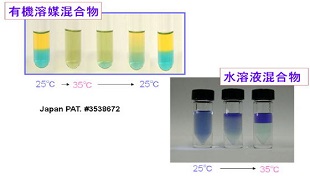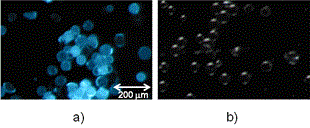A Large-Scale Synthesis of Modified Peptides and Nucleic Acids

Research members: Dr. Kazuhiro Chiba
Research fields: Agricultural chemistry, Basic chemistry, Biomolecular science
Departments: Institute of Agriculture
Keywords: Organic Synthesis, Peptide Science, Nucleic Acid Science, Organic Electrochemistry
Web site:
Summary

Although the anodic N-α C-H activation of N-carbonyl bonds is attractive for the synthesis of artificial proline analogues, there are significant limitations for further diversification in both the N-terminal and C-terminal directions. These limitations arise from the relatively high oxidation potential of N-carbonyl bonds, and the structural vulnerability associated with leaving groups at 5-position of proline. The electrochemical conversions cannot be directly applied to proline derivatives including the lower oxidation potential peptide side chain, protecting group and other functional units as compared with that of N-carbonyl bonds. Furthermore, replacement reactions in the N-terminal direction involving the deprotection of a proline N-protected with a 5-methoxy, trifluoroethoxy or acetoxy group generate unstable intermediates containing the hemiaminal ether bond; these intermediates decompose before they can engage in the subsequent reaction.
To address these problems, we explored viable electrochemical strategies for diversifying 5-substituted proline derivatives. Specifically, considering aspects of the oxidation potential and the lack of the stability, we sought to introduce a phenyl group as the leaving moiety: this intermediate should be stable as it avoids the germinal diheterolytic linkage. We then assumed that anodic oxidation of 5-trimethoxyphenyl proline would transiently form the radical cation, thus triggering C-C bond cleavage to deliver the N-acyl iminium cation and the phenyl radical. The resulting cation would couple with nucleophiles to provide 5-substituted proline derivatives. Furthermore, incorporation of electron-donating substituents into the phenyl group would lower the oxidation potential, thus enabling the use of various nucleophiles.
We therefore achieved anodic modification reactions of proline derivatives using the 2,4,6-trimethoyphenyl moiety as a leaving group. 2,4,6-Trimethoyphenyl at the 5-position of proline is stable during deprotection of the N- and C- termini and the subsequent modification reaction. Furthermore, the anodic substitution reaction proceeded via carbon-carbon bond cleavage at a lower oxidation potential due to the electron-donating property of the trimethoxy substituents.
In addition to the modification of prolyl peptides, we have developed a highly efficient synthetic method for azanucleosides, which allows the installation of various nucleophiles, including protected nucleobases, into prolinol derivatives directly and excusively at the 5-position. The LiClO4-CH3NO2 system anodically converted prolinol derivatives to the corresponding iminium cation intermediates, which were stabilized and efficiently trapped by various nucleophiles. The applicability and limitations of this system are currently under investigation.
Reference articles and patents
1)Emiko Matsumoto, Yuko Fujita, Yohei Okada, Esko I. Kauppinen, Hidehiro Kamiya, and Kazuhiro Chiba, Hydrophobic benzyl amines as supports for liquid-phase C-terminal amidated peptide synthesis: application to the preparation of ABT-510, J. Peptide Science, 2015, in press
2)Shoji, Takao; Kim, Shokaku; Yamamoto, Keisuke; Kawai, Tomomitsu; Okada, Yohei; Chiba, Kazuhiro, Anodic Substitution Reaction of Proline Derivatives using the 2,4,6-Trimethoxyphenyl Leaving Group, Organic Letters, 2014, 16 (24), 6404–6407. DOI http://dx.doi.org/10.1021/ol503198p
3)Yohei Okada, Kouhei Shimada, Yoshikazu Kitano, Kazuhiro Chiba, Short Step Anodic Access to Emissive RNA Homucleosides, Eur. J. Org. Chem. (short communication) 2014, 7, 1371-1375, COVER PICTURE, DOI: 10.1002/ejoc.201301604
4)Issei Akutagawa, Yoshitake Akiyama, Yutaka Takahashi, Motoyuki Iijima, Yohei Okada, Hidehiro Kamiya, Kazuhiro Chiba, Toward Continuous LC-MS Analysis: Surface Modification of Magnetic Microparticles by TiO2 for Phosphate Adsorption, Bioscience, Biotechnology, and Biochemistry, 2014, 78(5), 748−754, DOI: 10.1080/09168451.2014.905176
5)Ryosuke Abe, Shiori Shimizu, Karin Yasuda, Masae Sugai, Yohei Okada, Kazuhiro Chiba, Makoto Akao, Hitoshi Kumagai, Hitomi Kumagai, Evaluation of Reduced Allergenicity of Deamidated Gliadin in a 2 Mouse Model of Wheat-Gliadin Allergy Using an Antibody Prepared 3 by a Peptide Containing Three Epitopes, J. Agric. Food Chem., 2014, 62(13), 2845−2852. DOI: 10.1021/jf4034078
6)Takao Shoji, Shokaku Kim, Kazuhiro Chiba, Synthesis of Conjugated Oligonucleotide in Solution-Phase Using Alkyl-Chain-Soluble Support, Chemistry Letters, 2014, 43(8), 1251−1253. DOI: 10.1246/cl.140355
7)Masahito Takahashi, Yohei Okada, Kazuhiro Chiba, Phase-transfer-mediated electrochemical reaction: anodic disulfide bond formation under biphasic condition, Tetrahedron Letters, 2014, 55(26), 3622−3624, http://dx.doi.org/10.1016/j.tetlet.2014.04.116
8)Karin Mihara, Iku Okada, Kazuhiro Chiba, Yoshikazu Kitano, Facile Synthesis of N-Substituted Amides from Alkenes and Amides by a Brønsted Acid Mediated Electrophilic Addition Reaction, Synthesis, 2014, 46, 1455–1462. DOI: 10.1055/s-0033-1338605
9)Kazuhiro Aoki, Miki Maeda, Takashi Nakae, Yohei Okada, Keiichi Ohya, Kazuhiro Chiba, A disulfide bond-replacement strategy enables the efficient design of artificial therapeutic peptides, Tetrahedron, 2014, 70, 7774–7779. DOI http://dx.doi.org/10.1016/j.tet.2014.05.079
10)Okada, Yohei; Hosoya, Shoichi; Suzuki, Hidenobu; Chiba, Kazuhiro, Total Synthesis of Elastin Peptide using High Pressure-Liquid Phase Synthesis Assisted by a Soluble Tag Strategy, Organic Letters, 2014, 16 (24), 6448–6451. DOI http://dx.doi.org/10.1021/ol5032798
Contact
University Research Administration Center(URAC),
Tokyo University of Agriculture andTechnology
urac[at]ml.tuat.ac.jp
(Please replace [at] with @.)
